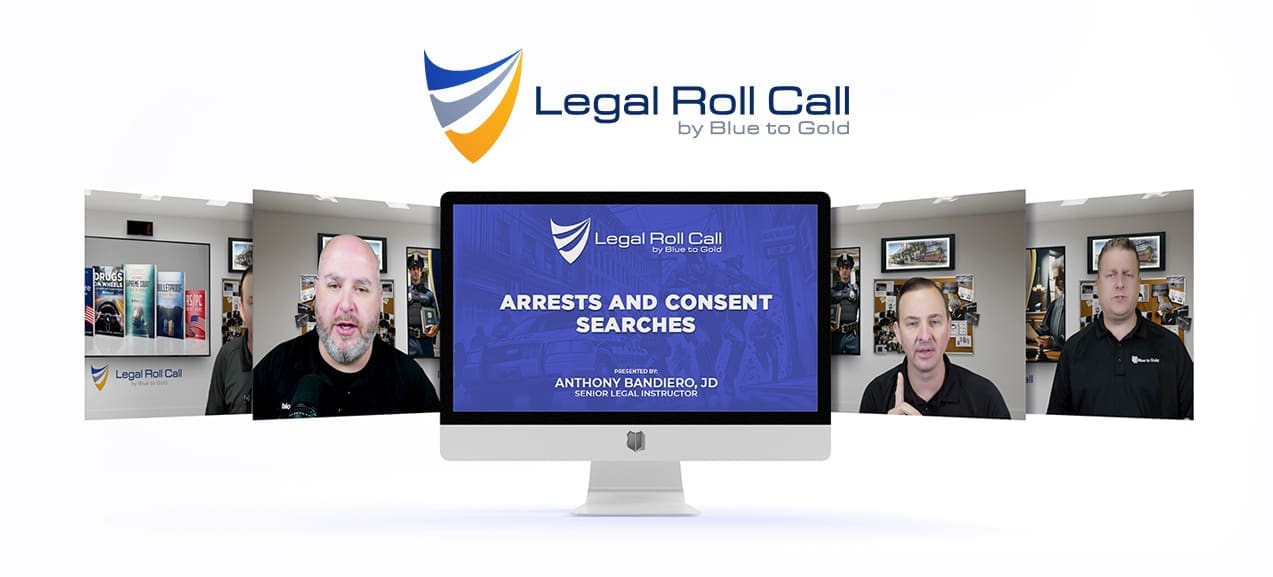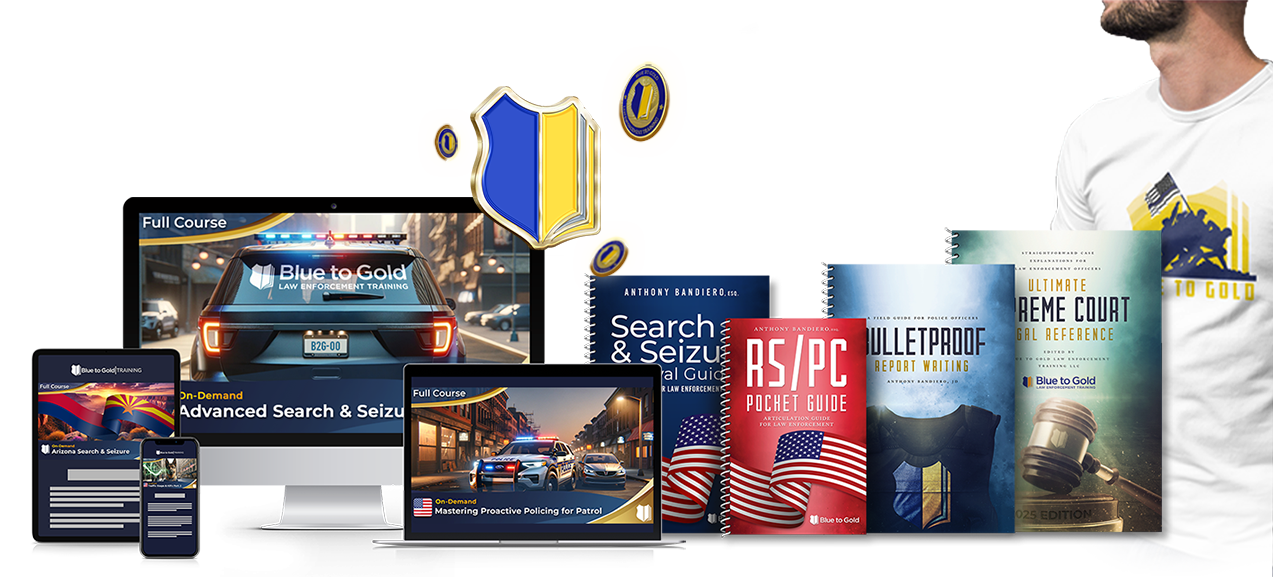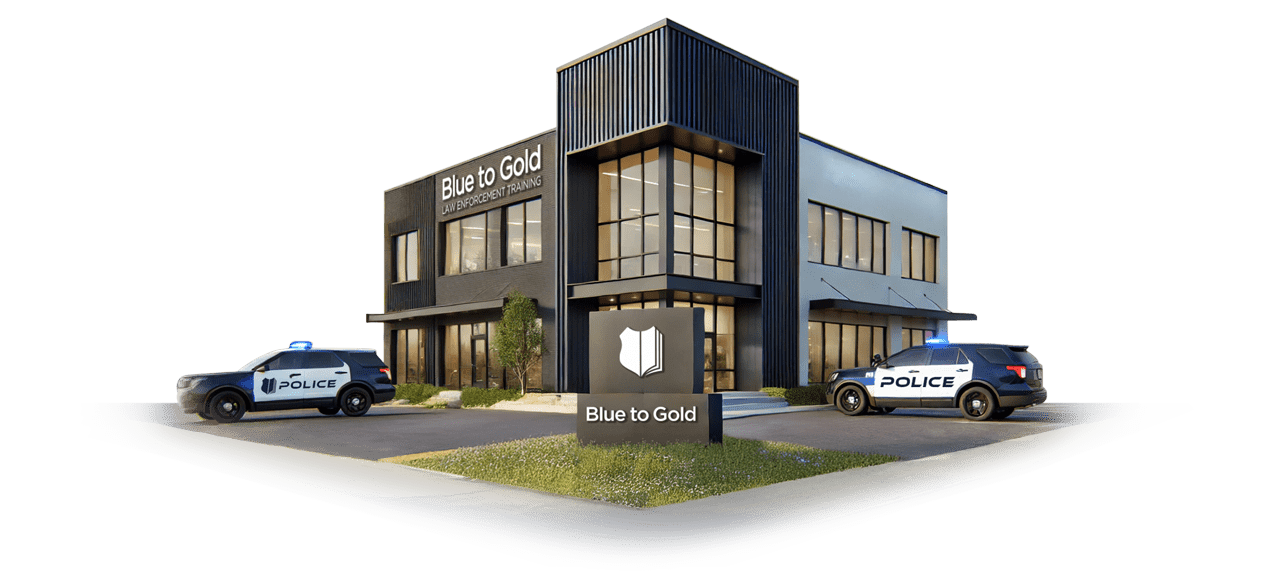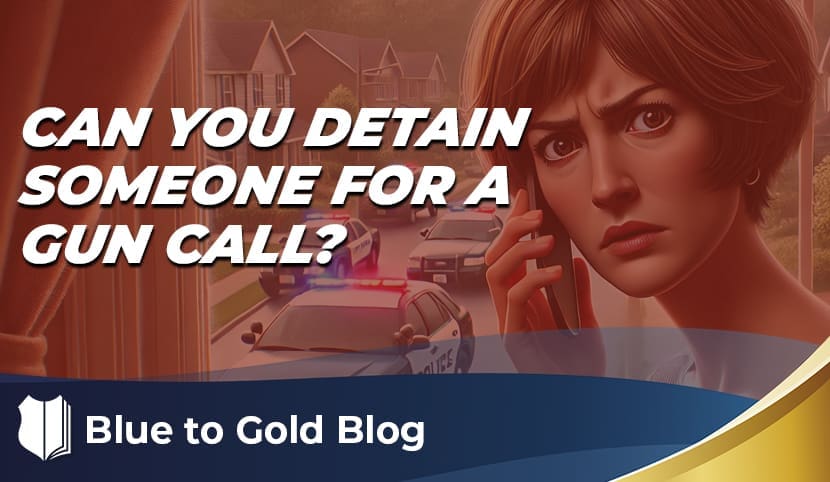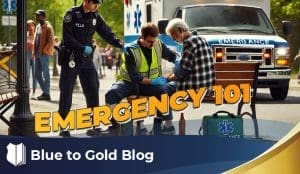Today’s question comes from an officer in California: Can you search a person based on a report that they have a firearm?
Scenario
A police officer receives a call about a man with a gun. For example, a witness reports seeing someone standing on a street corner holding a firearm. Upon arrival, the officer sees the individual but does not see a firearm. What can the officer do? Can they search the person for the firearm? Can they pat them down? What about searching a backpack?
Let’s break this down step by step.
Key Legal Precedents
Florida v. J.L. (U.S. Supreme Court)
In this case, police received an anonymous tip about a young person carrying a firearm. When officers arrived, they found someone matching the description, conducted a pat-down, and found an illegal firearm (because the individual was a juvenile).
The U.S. Supreme Court ruled this was an unlawful detention and frisk because:
- An anonymous tip is unreliable by itself. Why should the police believe the tipster?
- No proof of how the tipster knows what they claim. They gave no details proving they had firsthand knowledge.
If the Supreme Court had allowed stops based solely on anonymous tips, it would essentially grant a license to harass—allowing random people to accuse others of crimes with no accountability.
Navarette v. California (U.S. Supreme Court)
In contrast, this case involved a 911 call reporting a suspected drunk driver. The caller didn’t want to get involved but provided enough information to identify the vehicle. The Supreme Court ruled this tip was reliable because:
- 911 calls are traceable. Modern systems track callers, so they can be held accountable if they make false reports.
- People understand the consequences of false 911 reports. If someone falsely reports a crime, they can be tracked and charged.
Applying These Cases to a Firearm Call
Step 1: Is the tipster reliable?
- If the call was truly anonymous (no way to track them), it’s unreliable—just like in Florida v. J.L.
- If the caller used 911, they’re presumed reliable because they can be held accountable for false reports (Navarette standard).
Step 2: Does the tip indicate criminal activity?
- Simply seeing a firearm in public is not enough for reasonable suspicion in many states.
- However, if the call describes threatening behavior, brandishing, or intimidation, that could justify a stop.
For example:
- A man legally carrying a firearm in Texas? No reasonable suspicion.
- A man displaying a firearm on a street corner in California? Potentially reasonable suspicion, depending on circumstances.
California-Specific Considerations
- In California (and New Jersey), courts sometimes presume firearms are illegal due to restrictive concealed carry laws.
- I disagree with this approach, but it’s something officers must be aware of.
What Can Officers Do?
-
Pat-down search (Terry frisk):
- Officers can frisk the outer clothing for weapons based on reasonable suspicion.
-
Searching a backpack:
- If the suspect denies having a firearm and their clothing pat-down is inconclusive, officers can frisk the backpack.
- If the backpack cannot be properly patted down (e.g., too rigid or bulky), courts may allow a limited search inside—only to check for a firearm.
- Officers cannot search compartments that clearly cannot hold a gun (e.g., small coin purses).
Final Thoughts
For our officer in California:
- Do you have probable cause? No.
- Do you have reasonable suspicion? Likely yes, based on the caller’s reliability and the observed behavior.
- What’s your next step? Conduct a lawful Terry frisk of the person and possibly their backpack, following department policy and case law.

